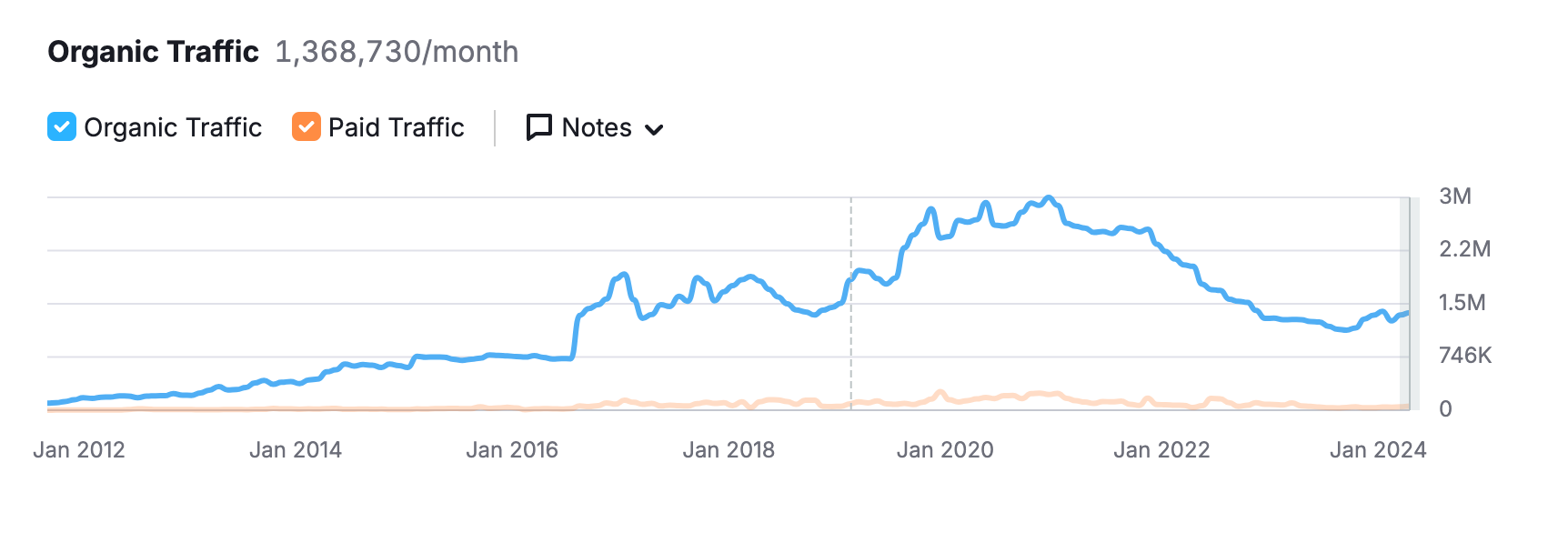|
|
Years ago, charging money for plugins/themes in the WordPress space was frowned upon.
But when WordPress began commercializing, developers saw the opportunity to start selling themes and plugins full-time instead of making them for free. Soon after, online marketplaces became powerful platforms, helping developers move products, reach bigger audiences, get useful feedback, and connect with others in the community.
Today, however, a shift is taking place.
WordPress product makers are moving away from “traditional” marketplaces and looking for solutions where they can have more control over sales and earnings.
To learn more about what’s currently happening in the industry and what the future will have in store for marketplaces, I sat down with Freemius founder and CEO, Vova Feldman, and Pangolia’s former Lead WordPress Developer, Atakan Oz. Vova spent over a decade helping software makers take control of selling their products, while Atakan previously listed themes on marketplaces, giving him first-hand insight into their challenges.
The Origin of WordPress Marketplaces
The commercial WordPress ecosystem began in 2008 with the introduction of paid themes. Premium features were limited but in demand, allowing developers who built them to earn good money.
Top developers were making up to $10,000 per month, with some reaching $40,000.
Envato, an Australian company, quickly recognized the gap for marketplaces offering premium WordPress products. In 2008, they launched ThemeForest, which became the largest marketplace for premium WordPress themes. A year later, they introduced CodeCanyon, now the top marketplace for premium WordPress plugins.

Envato’s Influence on WordPress Marketplaces
Envato has played a pivotal role in shaping the WordPress marketplace landscape. Vova says understanding the company’s history and primary goals provides valuable insight into its influence.
Envato started as a platform for selling digital assets like stock photos, music, and videos. The idea was to create a one-stop shop for a wide range of digital products.
Although Envato is behind ThemeForest and CodeCanyon, these platforms were not part of the company’s initial vision. WordPress products, while now a significant part of Envato’s offerings, were more of an expansion than a foundational goal. Envato’s true strength lies in its broad marketplace model, which covers a wide range of digital products beyond WordPress plugins and themes.
“The original sales model Envato used to sell digital products carried over to many modern WordPress marketplaces, including ThemeForest and CodeCanyon,” says Vova. “Unfortunately, this model doesn’t meet the needs of WordPress products, like updates and support subscriptions [more on this soon].”
This is one of the big reasons many WordPress authors on ThemeForest and CodeCanyon are exploring alternatives. The drive to exit has been given more momentum by stock file giant Shutterstock’s acquisition of Envato. For more insights on this exodus, check out our recent webinar Is This the Death of CodeCanyon and ThemeForest? and read our article on going non-exclusive with Envato alternatives.
“Pulling back from Envato and looking at the landscape as a whole, we’re seeing the same tendency: product makers are looking to leave or at least go non-exclusive for a bigger cut of their hard-earned cash,” Vova says.
One of the biggest challenges for product makers is marketplaces’ lack of subscription options, which many consider essential for sustainable revenue.
How an Absence of Subscription Models Hurts Developers
Many WordPress marketplaces focus on one-time purchases rather than subscription models. This pricing approach is flawed because it doesn’t account for the ongoing work needed to maintain and update products.
According to Vova, these issues stem from WordPress’s early days. “As a free, open-source platform with a strong culture of community and collaboration, many developers shared their products for free to contribute to the ecosystem. Charging for support and updates was also less common because the focus was on creating and sharing rather than monetizing.”
The mindset that WordPress software should be free persists, which is why many marketplaces have been slow to adopt subscription models.
This was one of Atakan’s biggest frustrations with selling on ThemeForest: “Customers pay once and the theme is theirs forever, which isn’t great for generating long-term revenue.”
This outdated model no longer makes sense in the modern WordPress era, leaving many developers in a tough financial spot.
An Unsustainable Business Model
Most people prefer to pay once for a theme or plugin and receive free updates and support forever. But this model is unsustainable. Imagine buying a car with lifetime free repairs and upgrades — it wouldn’t work for the manufacturer. Similarly, many software creators on marketplaces face this challenge.
While marketplaces are excellent for early traction, as your user base grows, so do support demands. Handling all of this for free becomes unrealistic, especially when you’re expected to provide continuous updates without additional compensation. You could hire help, but without charging for support or updates, your profits would quickly diminish.

Escalating Support Demands
WordPress products often interact with a variety of other software, leading to compatibility issues. With different versions of PHP, MySQL, WordPress, and other plugins in play, problems are inevitable. As your product gets used on more websites, the likelihood of support requests increases. Supporting a growing user base indefinitely, without compensation, is unsustainable.
Wasted Time, Resources, and Opportunity
Maintaining a steady income requires constant sales if you’ve been selling WordPress products for years and have many customers expecting lifetime support. But sales aren’t guaranteed, especially with changes in the WordPress ecosystem or a dip in marketplace traffic due to Google’s latest algorithm update. Even if sales drop, you’d still be obligated to support all of those customers for free.
“If those customers were on a subscription plan, you’d have reliable monthly recurring revenue,” Vova points out. This would allow you to hire support staff, focus on attracting new customers, and improve your product.
Extended Support Challenges
Some marketplaces have tried to address the issue of lifetime purchases by offering limited support with lifetime updates. For instance, on CodeCanyon, users get six months of support with their purchase, which they can extend. However, this system has flaws:
- Customers usually renew support only when they need help, leading to lost revenue.
- Renewals often happen due to urgent issues, overwhelming the maker with support requests.
- If a product update is buggy, users demand immediate fixes, regardless of their support status, putting the developer in a difficult position.
This situation forces product makers to either offer free support or risk bad reviews. While charging for unexpected support requests may seem fair to product makers, it can feel unfair to customers. Ultimately, resolving the issue is the product maker’s responsibility.
Lack of Update Mechanisms
Envato’s ThemeForest and CodeCanyon have additional challenges. “Envato’s roots are in visual assets, not software development, so they don’t provide a software update mechanism,” Vova explains. This means updates don’t automatically appear in the user’s WordPress Admin dashboard, leaving product makers to manage updates on their own.
While there are solutions, this highlights that Envato prioritizes selling digital and visual assets over software, even though ThemeForest and CodeCanyon remain the largest marketplaces for WordPress themes and plugins.
Unfortunately, the marketplace headaches don’t stop there…
The Last Straw for Many Software Sellers — All-in-One Subscriptions “Solution”
A few years ago, WordPress themes dominated the market, flooding Envato. “ThemeForest generated nearly 7.5 times more revenue than CodeCanyon,” Vova says. “But the rise of the WordPress Visual Editor shifted demand back to traditional, lightweight themes, leading to a sharp decline in sales.”
This drop in theme sales, once a major revenue driver, hinted that the WordPress market might be shrinking. At the same time, Envato found growth elsewhere, as the booming digital creator economy promised greater revenue potential than WordPress products. These changes, coupled with the challenges of subscription models, drove the launch of Envato Elements.
What is Envato Elements?
Launched in 2015, Envato Elements provides digital creators — designers, YouTubers, and marketing agencies — with unlimited downloads of assets through a tiered subscription service. The platform offers a wide range of resources, including photos, graphics, music, video templates, and WordPress products like themes and plugins.

Envato Elements’ (inequitable) subscription model divides a portion of the monthly fee among all sellers whose products are downloaded. The more downloads, the smaller each seller’s share.
To add insult to injury, Envato promoted Envato Elements with banners on individual product listings, undercutting sellers by encouraging customers to opt for a cheaper subscription.
“Envato Elements exploits WordPress product makers more than other sellers,” Vova says. “Unlike plugins and themes, design assets like audio files and stock photos don’t need updates or support. Besides earning a fraction of their product’s price, developers are also left with additional demands for updates and support, which can quickly balloon if many users download your product.”
But WordPress product makers aren’t the only ones who’ve felt the negative effects of Envato Elements. “It’s done more harm than good to Envato’s marketplaces, too,” Atakan says.
Why Envato Elements Is Detrimental for Envato
ThemeForest started to have some trouble about 4 or 5 years ago — not too long after Envato Elements was introduced. Since then, creators’ sales have been plummeting.
Atakan heard from other sellers that many wanted to leave ThemeForest but found it hard to manage license keys and marketing.

“Most experienced WordPress developers and users have learned to steer clear of ThemeForest’s products since the introduction of Envato Elements,” Atakan says. “The quality is no longer there, and the creators who put out good stuff are either trying to find a way out or have already jumped ship.”
Other Problems With Marketplaces
WordPress marketplace issues don’t end with a lack of subscriptions, high support demands, and inequitable platforms like Envato Elements. Sellers also have to deal with insufficient marketing, limited analytics, and exorbitant fees.
A Lack of Marketing and Promotion
Most marketplaces will only promote products once they reach a predetermined review tier or rank as top sellers.
As an example, consider the marketing system used by the AppSumo marketplace.
AppSumo will promote your product through email, social media, and affiliates, but only after five users rate it 4–5 tacos (stars): :
- 5 reviews get you a shoutout in AppSumo’s Facebook group.
- 10 reviews earn you a mention in the Friday email newsletter.
- 20 reviews secure your spot in AppSumo’s Rising Star Collection.
- 25 reviews land you a feature in AppSumo’s Sunday night email blast.
The responsibility falls on you to attract those initial users to your product listing and convert sales. If you don’t have a mailing list or social media following, getting those first sales and reviews could be challenging.
Limited Access to Analytics
“Analytics are vital to understanding how customers perceive and interact with products, both pre- and post-sale. And yet, most marketplaces don’t provide them to product makers,” Vova says.“Without this knowledge, it’s hard for product makers to figure out how to improve their products, which is crucial for generating more sales.”
On that note, Freemius helps you track your sales, subscriptions, and other key metrics as they happen, all in one place. Whether you manage one store or multiple, these powerful tools give you the insights you need to make data-driven decisions and optimize your business. Click here to find out more about how we help software makers grow sustainable, successful businesses with comprehensive, granular analytics.

Money Problems
The main reason product makers sell on marketplaces is revenue, but the returns aren’t always great. Many marketplaces take high commissions and push for product exclusivity by charging non-exclusive sellers even higher fees. For example, Envato takes 37.5–55% from exclusive sellers and 67% from non-exclusive sellers.
While some marketplaces, like WooCommerce and Divi Marketplace, offer better deals with 70% commissions and no exclusivity requirements, they still take a 30% cut without providing much in terms of marketing or analytics.
When you compare the costs of selling on marketplaces to the benefits, the ROI often doesn’t add up. Despite this, many product makers still opt for these platforms or are hesitant to leave them.
How come?
Why Software Makers Still Sell Plugins and Themes on Marketplaces
“While most marketplaces don’t actively promote individual products, they attract high traffic and rank well on search engines, making it easier for buyers to find themes or plugins there than on a maker’s store,” Vova says.
For new software makers, marketplaces offer valuable exposure and a built-in customer base that’s hard to replicate independently. They attract high traffic and provide a trusted environment where buyers feel confident making purchases. Marketplaces also connect newcomers with other sellers, helping them understand market trends, target the right niches, and build their reputation within the WordPress community.
However, while marketplaces can be profitable, they come with challenges. Makers must navigate the platform’s rules, fees, and potential changes that may favor the marketplace over the seller. Although going solo offers more control over profits, driving traffic and building trust can be difficult without the visibility that marketplaces provide.
“The key to success on marketplaces lies in smart positioning, leveraging platform tools, and staying aware of customer needs. Ultimately, the decision to stick with a marketplace or explore independent options depends on whether the benefits continue to outweigh the drawbacks as your business grows,” says Vova.
So, after exploring the pros and cons of WordPress marketplaces, the big question is: where do you go from here? Should software makers stick with these platforms and hope for improvement, or is it better to explore other options? And if so, where should you start looking?
Grab a free copy of our Cheat Sheet for
Selling Plugins and Themes
A growth roadmap with concise, actionable tips for every milestone of WordPress product development.

Navigating the Evolving WordPress Marketplace Landscape
Marketplaces have transformed the WordPress ecosystem. However, a lack of subscription options, marketing and analytics, high commission rates, and other problems pose challenges for both new and experienced software sellers.
As the market evolves, many makers are looking for alternatives that offer better control over distribution and revenue. Understanding the history and issues with traditional marketplaces is key to finding more sustainable and fair business models.
Many are now setting up their own online stores and using a merchant of record (MoR) to handle financial and legal tasks like payment processing, tax compliance, and billing. This approach helps meet all administrative and regulatory requirements.
Freemius acts as an MoR, providing an all-in-one SaaS engine for WordPress product makers.
Our Developer Dashboard handles payment processing, licensing, updates, and support. Built-in analytics offer insights into user interactions, while deactivation feedback helps improve products. We also manage US Sales Tax and EU VAT and operate on a transparent revenue-sharing model, charging 7% in lifetime sales.
If you’d like to find out more about making the shift away from marketplaces to our platform or are looking for a business model for your WordPress plugin or theme, get in touch with us at [email protected].








